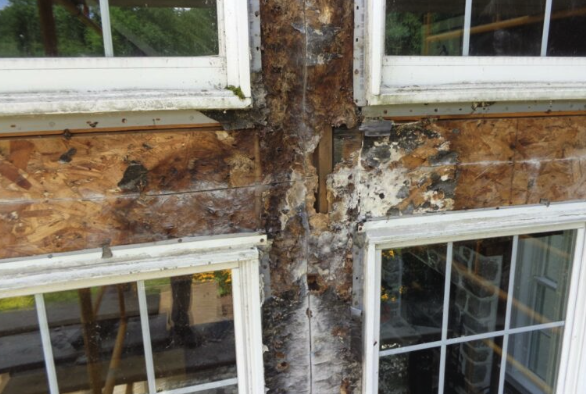The Science of Keeping Warm: The Role of Windows in Home Insulation

As the winter season approaches, homeowners often find themselves grappling with high heating bills due to the inefficiency of their windows. Drafty windows can significantly impact a home's insulation, causing precious warmth to escape and cold drafts to enter through your windows and doors. This not only results in discomfort but also leads to increased energy costs. However, there's good news – with the help from Wallaby Windows you can keep the cold out and your energy bills down. In this blog, we'll share practical advice on how homeowners can prepare their windows for the winter season, improve insulation, and save on heating costs.
Understanding the Importance of Winter Window Maintenance
Before we get into the specifics of window maintenance, let's understand why it's crucial to address this issue. According to the U.S. Department of Energy, windows account for about 25-30% of residential heating and cooling energy use. Inefficient windows can lead to significant heat loss, which not only affects your comfort but also puts a strain on your wallet. In fact, the U.S. Environmental Protection Agency (EPA) estimates that homeowners can save an average of 15% on heating and cooling costs by properly insulating and maintaining their windows. By taking a proactive approach to winter window maintenance, you can not only reduce your energy consumption but also increase the overall comfort of your home.
Checking for Window Drafts
Visual Inspection: The first step in winter window maintenance is to identify any drafts or areas of concern. Start by performing a visual inspection of your windows. Look for cracks, gaps, or damaged seals around the window frames and sashes. Even tiny gaps can allow cold air to seep into your home.
Candle Test: Another effective way to identify drafts is by conducting a candle test. On a windy day, light a candle and hold it close to the window frame. If the flame flickers or wavers, it indicates a draft. Take note of these drafty areas for later action.
Energy Audit: Consider hiring a professional for a home energy audit. They use specialized equipment, such as thermal imaging cameras, to identify areas where heat is escaping. An energy audit can provide a comprehensive assessment of your home's energy efficiency and help you pinpoint window issues.
Sealing and Insulating: Once you've identified the areas in need of attention, it's time to address the drafts and improve insulation.
Caulking: Caulking is an effective way to seal gaps and cracks around your window frames. Use a high-quality caulk that is designed for exterior use. Be thorough in your application, ensuring that you cover all visible gaps. The U.S. Department of Energy reports that proper caulking can reduce heating and cooling costs by up to 20%.
Weatherstripping: Weatherstripping is a versatile method to seal gaps between moving parts of your windows, such as the sashes and frames. Weatherstrips come in various materials, including adhesive foam, V-strip, and silicone. Choose the one that best fits your needs and follow the manufacturer's instructions for installation.
Window Insulation Film: Window insulation film is a cost-effective solution to add an extra layer of insulation to your windows. These clear plastic films create an air barrier, preventing heat loss and drafts. According to the EPA, using window insulation film can save up to 14% on heating costs.
Consider Window Treatments: Heavy curtains or thermal blinds can also help insulate your windows. When closed, they create an additional barrier against the cold. Make sure to keep them closed during the night and when the room is not in use.
Regular Maintenance: Maintaining your windows during the winter season is an ongoing process. Regular care can ensure that your windows remain efficient and drafts are kept at bay.
Clean Your Windows: Dirt and debris can accumulate on your windows over time, reducing their efficiency. Clean your windows regularly, both inside and out, to allow more sunlight to enter and improve insulation. The EPA recommends cleaning your windows every two to three months.
Lubricate Window Hardware: Windows with moving parts, such as sliding or double-hung windows, can benefit from occasional lubrication. Apply a silicone-based lubricant to ensure that your windows open and close smoothly and create a tight seal.
Inspect and Replace Weatherstripping: Inspect your weatherstripping annually, and replace any worn or damaged sections. Damaged weatherstripping can compromise the integrity of your windows and allow drafts to enter.
Consider Window Replacement: If your windows are old, inefficient, or beyond repair, it might be time to consider window replacement. According to the National Association of Realtors, new energy-efficient windows can recoup 60-80% of their cost in added home value. Here at Wallaby Windows, we offer a free, in-home consultation where we can help you evaluate your needs and provide an on the spot quote!
Additional Tips for Winter Window Maintenance
Here are a few more tips to help you get your windows ready for the winter season:
Use Draft Stoppers: Place draft stoppers or door snakes at the base of your windows to prevent drafts from sneaking in from the gaps beneath your windows.
Install Storm Windows: Storm windows can add an extra layer of insulation and protection to your existing windows. They act as a buffer against harsh winter weather.
Trim Overhanging Branches: If you have tree branches near your windows, consider trimming them. Overhanging branches can cause damage to your windows during winter storms.
Keep Curtains and Blinds Open During the Day: Let natural sunlight in during the day to take advantage of free heating. Close them at night to insulate your windows and keep the cold out.
Proper winter window maintenance is essential for keeping the cold out and energy bills down. By identifying drafts, sealing gaps, and regularly maintaining your windows, you can significantly improve your home's insulation and reduce heating costs. The savings you achieve not only benefit your pocket but also contribute to a more sustainable and energy-efficient home.
Remember, every step you take to enhance the efficiency of your windows not only keeps your home warmer but also reduces your carbon footprint. In an era where energy conservation is vital, taking care of your windows is a responsible and cost-effective choice. So, take the time to assess and maintain your windows, and enjoy a cozy and energy-efficient home throughout the winter season.
The Science of Staying Warm: How Your Windows Work to Keep You Warm in the Winter
Windows, the transparent barriers between the cozy warmth of your home and the frigid winter air outside, play a crucial role in maintaining a comfortable indoor temperature during the colder months. The science behind how windows work to keep you warm in the winter is fascinating and essential to understand for effective winter window maintenance. In this section, we will explore the scientific principles that underpin the insulating properties of windows and how they contribute to your home's energy efficiency.
The Role of Windows in Insulation: Windows are not just openings in your walls; they are sophisticated components of your home's envelope that perform multiple functions, including insulation. The insulating properties of windows are determined by several key factors:
Material Selection: The type of material used in your window frames and glazing significantly impacts their insulating abilities. Common window materials include:
- Single Pane Glass: These are the simplest and least insulating windows. They consist of a single layer of glass.
- Double Pane (or Dual-Pane) Glass: These windows have two layers of glass with a sealed space in between, often filled with inert gases like argon or krypton. The space acts as an insulator, reducing heat transfer.
- Low-E Glass: Low-emissivity glass has a special coating that reflects heat back into your home, making it more energy-efficient.
Air Leakage: The quality of window seals, weatherstripping, and the presence of drafts around the window frame have a significant impact on heat retention. An airtight seal is essential to prevent warm indoor air from escaping and cold outdoor air from entering.
Solar Gain: Windows can also help capture and utilize solar heat. During the day, sunlight passes through the glass, and the absorbed heat warms your home. The design and orientation of your windows affect how much solar heat gain your home receives.
The Science of Heat Transfer: Understanding the science of heat transfer is crucial to appreciate how windows function in keeping your home warm in winter. There are three primary modes of heat transfer: conduction, convection, and radiation.
Conduction: Conduction is the direct transfer of heat through a solid material. In the context of windows, it means that heat can be conducted from the warm interior to the cold exterior through the glass and frame. This is where double-pane windows with insulated glazing excel. The trapped air or gas between the panes acts as an insulator, reducing heat conduction.
Convection: Convection is the transfer of heat through a fluid (liquid or gas). When the air near your window is in contact with the cold glass, it cools and becomes denser, causing it to sink. As it sinks, warm air rises to take its place, creating a cycle of heat transfer. Effective weatherstripping and seals around windows prevent unwanted convection currents.
Radiation: Radiation is the transfer of heat through electromagnetic waves, primarily in the form of infrared radiation. Low-E glass coatings are engineered to reflect a significant portion of this heat radiation back into your home. They allow sunlight in but reduce heat loss, making your windows more energy-efficient.
Window Maintenance and the Science of Staying Warm
The science of staying warm in the winter is intricately connected to the maintenance and care of your windows. Addressing drafts, ensuring proper seals, and selecting energy-efficient materials all play a role in how effectively your windows insulate your home.
Understanding the science behind windows helps homeowners make informed decisions about window maintenance, repairs, and replacements. As we've discussed, window maintenance involves addressing the three primary modes of heat transfer: conduction, convection, and radiation. By minimizing heat loss through these mechanisms, you can keep your indoor spaces cozy and comfortable, all while reducing your energy bills.
The science of staying warm in the winter through effective window maintenance is a fascinating blend of material science, thermodynamics, and architectural design. By applying this knowledge to your home, you can create an energy-efficient, comfortable, and eco-friendly living space that welcomes the winter season with open arms.
Considering Replacement Windows?
Curious to learn more about casement windows? Don’t hesitate to reach out to us here at Wallaby Windows. We offer high-quality vinyl windows that won’t chip, peel, crack, or warp. Wallaby Windows’ team of experts is here to help. We provide first class service in the installation of your new replacement windows. Schedule your free, in-home consultation today!
Find a Wallaby Windows Location Near You



